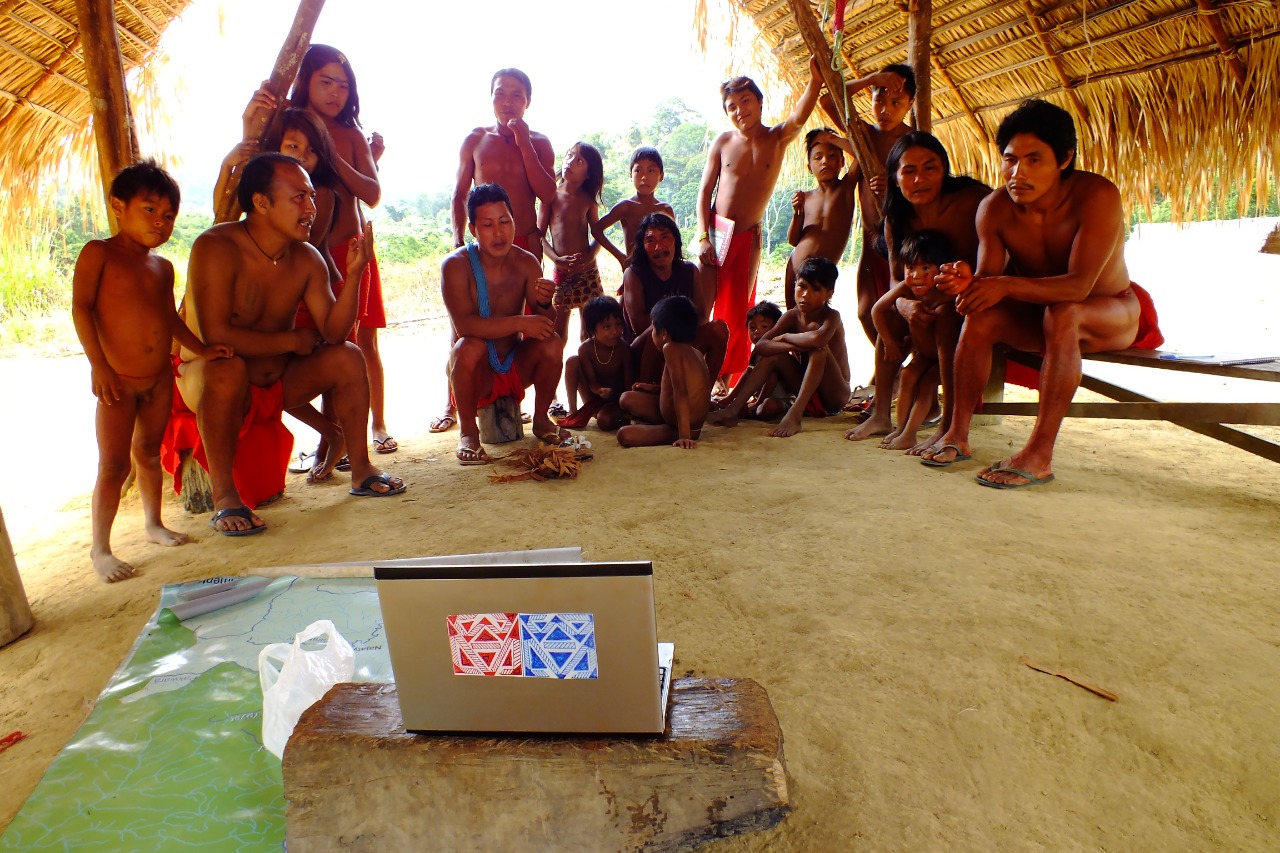FOURTH NOTE FROM THE APINA ON THE INVASION OF THE WAJÃPI INDIGENOUS LAND
FOURTH NOTE FROM THE APINA ON THE WAJÃPI INDIAN LAND INVASION
We, the members of the Wajãpi Village Council wish to report that representatives of our organizations have accompanied FUNAI (National Foundation for Indigenous Peoples in Brazil) agents team to the Mariry Village region on the morning of July 30, 2019. A FUNAI team remained in the Karapijuty Village waiting for the arrival of a helicopter to transport chief Emyra Wajãpi's body to be exhumed. This operation was postponed, however, until next Friday, August 2nd.
We accompanied the other team that headed to Mariry, the central Village, to interview Yvytõtõ Village witnesses who actually saw the non-indigenous invaders.
In the afternoon, we had a meeting with head chiefs and representatives from the Mariry Region to explain to the Indians what the deposition work with Funai is like and we started the interviews. Witnesses from the Yvytõtõ Village near Mariry village confirmed that they saw two armed invaders in the late afternoon of July 26.
They said that soon after they saw them, the residents of the Yvytõtõ Village sent two people to the central village, Mariry, to warn people about the presence of those invaders, and this information was then transmitted by radio to various Indigenous Villages within our Wajãpi Indigenous Land.
While we were interviewing our relatives in the Mariry Village, we were interrupted by two women warning us about having just seen an intruder running past the house where they were cooking. The Mariry Village warriors immediately ran after him but found no trace of them.
As we returned to the meeting, some of our warriors kept watching along the paths around the Village. During the meeting, two Indigenous health workers arrived, coming from the Ytawa Village, who reported that they had passed by the Komakawyry Village, where they saw traces of recently killed farmed animals and that the household objects of one home had been tossed around.
The family targeted in that village had moved to the Ytawa Village due to fear because of the invaders. One of the health officials said his son had gone to the Wyraury Village to warn of the presence of invaders, saying that he would be back on July 28 but he had not yet returned. So he said he was very worried and would go looking for his son. After that, they left for the Ytawa Village.
After a few minutes, they ran back saying that they had found the invader's footprints in the mud of the road and that they had also found a dead Juruti bird. They wondered why this Juruti had no injuries as we, the Wajãpi people, only hunt Jurutis with arrows. So they suspected that the invader had killed the Juruti with a trap.
Then they took our team to see the footprints, but we didn't follow the tracks because it was getting dark. The women who had seen the invader running earlier on told us that was the way towards which the invaders had fled. We were able to film and take pictures of footprints of regular shoes, which we Indians don’t wear in our paths. We, the Wajãpi know very well how to read footprints because we are hunters and every one among us agreed that that trail was from an invader.
On July 31st morning, we went to the Yvytõtõ Village with the Funai representative to reconstitute the testimonies with the witnesses. We filmed them showing the places where they saw the invaders on July 26th and the trails that they had left in the woods.
The women said they had spotted two invaders in the late afternoon and that they were armed: one tall black man and one shorter man with curly hair. They said that they wore clothes that looked like army uniforms. They said that at night the invaders returned, four people, and spent a few hours in the Village's uninhabited houses.
Our relatives said the invaders communicated amongst themselves with signals and used flashlights, our dogs barked a lot. The women fled to their cultivated fields, afraid that they would kill all of the families. The men stayed in a more remote house, watching the invaders move about. They were very worried and could not fall asleep. At about 4:00 a.m. the non-indigenous invaders communicated with each other and left.
When dawn broke on July 27, our relatives left the Yvytõtõ Village and went to the Kanikani Village to join with other families. So far some communities in the Mariry Region have been leaving their villages to join with others so as to protect themselves, and the women are afraid to go to work in the fields.
Our warriors are teaming up to find traces of the invaders and because of that, they are not going out hunting. This is hurting our livelihoods a lot, so we urgently need Funai's permanent presence in the central village of Mariry and a longer-term investigation by the Brazilian Federal Police or the Brazilian Army into this region.
All records of photos and videos we have made are now in the hands of the Funai team in charge and we will also bring a copy to the Federal Prosecutor's Office in Amapá.
The Wajãpi - Apina Village Council
Aramirã Post - Wajãpi Indigenous Land, August 1, 2019.
Website: www.apina.org.br
E-mail: conselho@apina.org.br
The Wajãpi indigenous people in one of their villages. Photo: Bruno Caporrino

